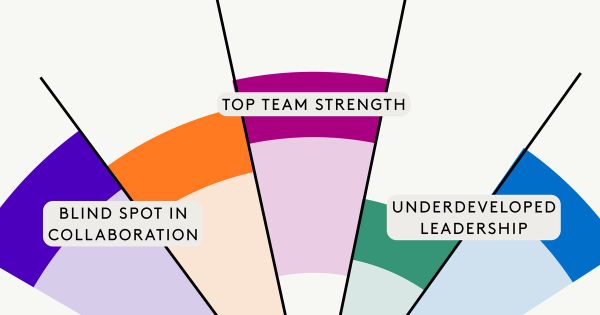Can a company strategy bring about real behavioural change?

The Kirkpatrick Model is highly respected and sees behaviour change as a core feature of successful L&D. How can you design a learning journey for behavioural change?
The Kirkpatrick Model has been ‘The Standard for Leveraging and Validating Talent Investments’ for over six decades. It is the product of research and development by Don Kirkpatrick and is widely respected as a means of judging the efficacy of learning journeys.
There are four levels of success:
Level 1: Reaction
The degree to which participants find the training favourable, engaging, and relevant to their jobs.
Level 2: Learning
The degree to which participants acquire the intended knowledge, skills, attitude, confidence, and commitment based on their participation in the training.
Level 3: Behaviour
The degree to which participants apply what they learned during training when they are back on the job.
Level 4: Results
The degree to which targeted outcomes occur as a result of the training and the support and accountability package.
Moving from one level to another is no small accomplishment, and these levels represent a broad expanse of achievement. However, one of the stickiest problems presented by this standard is the leap from knowing to doing.
For weaker learning providers, the assumption is that if you provide the input, the output will come automatically. The opposite is in fact true. You must join the dots between the knowledge and the action, for the expected behavioural change to happen. Just teaching time management skills, is not enough to prevent a learner from being late. Telling someone how to pitch effectively doesn't empower them sufficiently to prevent their pitch from falling flat.
How can the learning extend from the moment of facilitation to be present when the individual needs to apply learning in action?
There are all sorts of potential pitfalls and problems when designing learning to change behaviour.
1) You can’t be with the learner all the time, and some of the responsibility must fall on the individual.
2) You can’t deliver for the varied contexts that the learner is presented with, so it can’t be the “if a then do b” model, so again, some of this critical thinking must fall on the learner to adapt the learning.
Here is a potential solution. It does have to fall on the learner’s shoulders to apply the learning effectively. Yet, we need to help them do this. When designing a learning journey, the designer must consider the systems and structures that enable critical thinking and curiosity.
Here is a traditional learning model:
- Deliver the lesson
- gGo back to work and put it into action
- Find reasons to say the learning was successful
A model designed for behaviour change will go as follows:
- Present the challenge and encourage exploration of solutions
- Experiment with the solutions while at work
- Come back and reflect on the power of the solution
- Evolve and improve the solution and see how the changes work while at work
- Reflect on the improvements
- Repeat
There are all sorts of theories that support this ongoing iterative mindset. First is the work of James Clear, who wrote Atomic Habits. He claims that small actions build huge transformations, and we must work iteratively to evolve the productive behaviours that will help us.
In his work with the British Cycling Team, Sir Dave Brailsford showed this approach in action. He called it marginal gains, where 1% changes in every aspect of performance resulted in a significant transformation in the overall performance. He identified something that might result in improvement, tried it out, tested to see the results, iterated, and then found something else to make a micro change.
However, the most compelling research for this approach has been presented by Adam Grant. In his book Rethink, he proposes that learners should think like scientists. In other words, we learn by developing hypotheses about what might work, putting them into practice and then reflecting on the outcomes. It is how humanity has progressed for centuries, and yet we do not always equate this to how our understanding can evolve while living our lives.
To achieve behaviour change, the facilitator needs to switch the emphasis of their role. The facilitator is not there to provide answers that must be acted upon. The facilitator creates an environment where critical thinking and curiosity are the norms and actioning small insights while working is encouraged, celebrated, and reflected on by the individual and the organisation.
Learning should never be separated from living and working. Learning is the whole experience of going through life and getting wiser. Therefore, learning is not facilitated in formal sessions with an evaluation at the end that grades effectiveness. The structures and systems for learning need to extend to all the stages of the journey.
The facilitator needs to guide the learner in discovery. Where am I now? Where do I want to be? What do I need to do to bridge the gap?
The facilitator needs to provide the opportunity, and the skills to explore the nature of the problem faced and to fill gaps with insights.
The facilitator must then encourage action in life and work. The learner should be encouraged to select the small actions that will impact their productivity and effectiveness, and consequently, experiment.
There must then be structures for reflection, iteration, and reward.
All these stages are the responsibility of the learning professional. Once you encourage the learner to see all experiences at work as possible learning moments, you have won the behaviour battle. You can then deploy accountability models to make that final step to Level 4, though this is for a different article.
Entelechy has created a methodology that moves learning design forward, encouraging the action, reflection and reward that fosters thisIf you would like to learn more about the Entelechy approach to evolving behaviours in the workplace, contact us for a demo today.
You may also like

Summer Break: A Guide for Graduates

